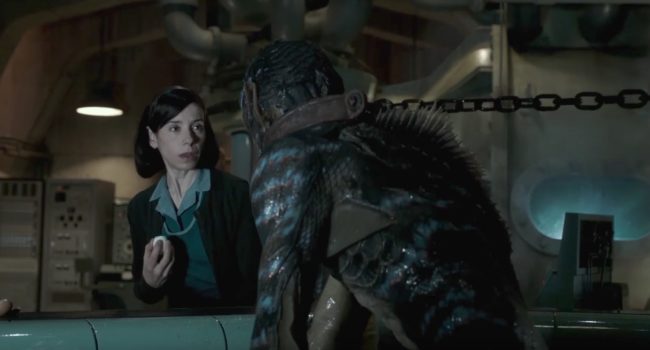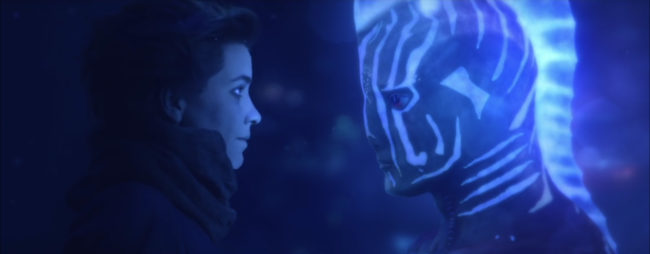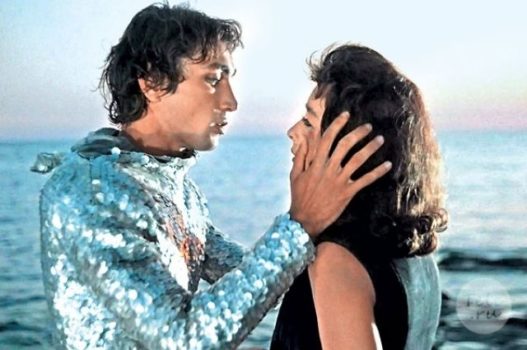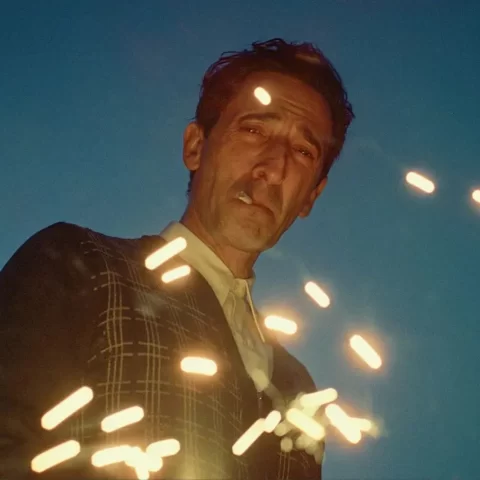
The Shape of Water
The Shape of Plagiarism of director Guillermo del Toro
American film The Shape of Water was awarded several prestigious prizes including the Golden Lion at Venice Film Festival, received thirteen Oscar nominations and got mostly positive reviews from film critics.
Recently the film The Shape of Water came into the center of attention due to allegation of plagiarism from the Dutch student film The Space Between Us which was released in 2015.
The film The Space Between Us has exactly the same plot as The Shape of Water, the same visuals and the same color palette. The similarity is so obvious that there is no doubt that director del Toro stole from the independent student film. It is especially shameful because del Toro, with his advantages of having a big budget, had a chance to hire the best screenwriters. However he chose to steal and take credit for the stolen plot. del Toro is the only credited screenwriter of The Shape of Water.

The Space Between Us (2015)
Avoiding the scandal before Oscars, del Toro contacted the young filmmakers from Netherlands and somehow convinced them not to make a claim. The Netherlands Academy immediately came with a statement where they wrote that the stories are different and that no plagiarism has occurred. However, it is not for them to decide if it happened or not; it is up to the audience to see the film and to compare the two. It is not the first time when the rich steal from poor and the poor are very happy about it.

Amphibian Man (1962)
However, most of the critics ignore obvious plagiarism from yet another source — the Soviet classical film Amphibian Man. Probably the critics are not too familiar with Russian cinema. The film Amphibian Man was made in 1962, the same year which is depicted in The Shape of Water. Amphibian Man was based on the famous 1928 novel by Alexander Belyaev. The book was highly innovative at that time, and tells the story of a person who lives mostly under the water and his relationship with humans, in particular his love to a young girl. He was captured and kept in a barrel in order to exploit his unique possibilities.

Amphibian Man – 1962
When we think about the similarities between the plots, it is obvious that the director was aware of the book, although he claimed not to have watched the film Amphibian Man. Nevertheless, the Soviet picture is a beautiful romantic story about two humans in a cruel world while The Shape of Water is a story of zoophilia and perversity which is supposed to be a story of true love. The main character of Belyaev’s novel was a human with gills; different from others, maybe a bit naive, but an intellectual human being, not a monster nor animal.
The sea monster in The Shape of Water eats a cat, his communication with the girl is reduced to her feeding eggs to him, like to an animal. There is no intelligent connection between them, Eliza’s love for the creature is similar to love for a pet, which one can feed and touch. But her sexual intercourse with this monster is perversion, which should not be romanticized and shown as an example of romantic love. In a way the film of del Toro is inspired by pornographic fiction about women’s relationships with monsters.
Zoophilia is in fact a crime, according to the existing laws, and people get in jail for this act.

Amphibian Man – 1962
This film looks like a parody on the Amphibian Man by Belyaev. The film also took a lot from The Creature from the Black Lagoon, which is a horror story, but when transformed into a romantic tale, it becomes ridiculous.
The positive side of the film is the acting of Sally Hawkins, who created a convincing image of a shy and miserable mute cleaning lady. However all the other characters are grotesque and unbelievable.
Director who plagiarized the Russian novel did not think about the Russian audience at all. The Russian language spoken by the characters is unbearable to listen to people who know Russian language. Which is strange, since there are many good Russian-speaking actors in Hollywood who do not get cast enough in films.
The director described the masturbation scenes as critical, as he wanted to show how little time Elisa has before work. It shows his lack of understanding of the female sexuality, it is unrealistic, stupid and vulgar.
The film consists of nonsense and clichés, the plot is uninteresting and and unbelievable.
It is a sugar-sweet stupid melodrama which pretends to be arthouse cinema, but in fact it is only plagiarism and perversion.
